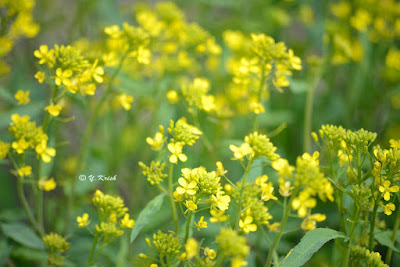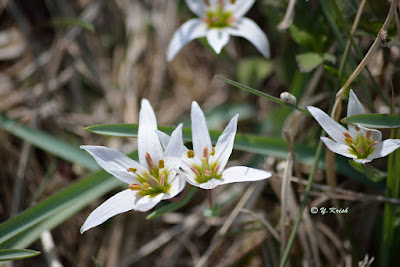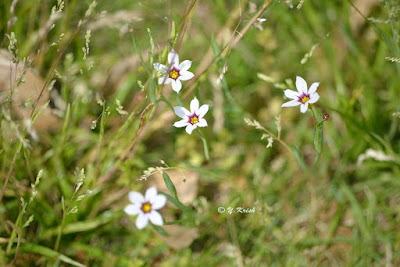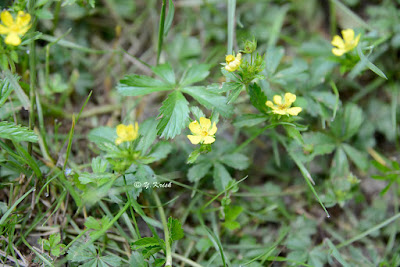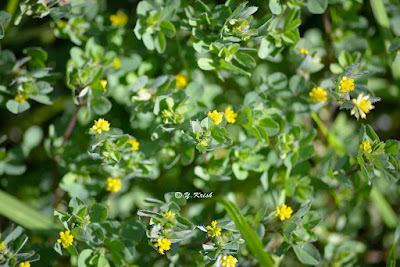Wild Life
Wild plants
Wild plants in Kita Kanto
There are many mountains in “Kita Kanto” (“Ibaraki”, “Tochigi” and “Gunma” Pref.), and plants of native species are growing there.
Mt. Tsukubasan , Ibaraki Pref.
ツボスミレ, Tsubosumire, Viola Verecunda
トウゴクサバノオ, Tougokusabanoo, Dichocarpum Trachyspermum
ミヤマハコベ, Miyamahakobe, Stellaria Sessiliflora
エンレイソウ, Enreiso, Trillium Smallii
ユキザサ, Yukizasa, Maianthemum Japonicum
チゴユリ, Chigoyuri, Disporum Smilacinum A. Gray
ハナイカダ, Hanaikada, Helwingia Japonica
ミヤマシキミ, Miyamashikimi, Skimmia Japonica
ギンラン, Ginran, Silver Orchid
ギンリョウソウ, Ginryoso, Monotropastrum Humile
コゴメウツギ, Kogomeutsugi, Stephanandra Incisa
ホウノキ, Hounoki, Japanese Bigleaf Magnolia
ヤマボウシ, Yamaboushi, Japanese Flowering Dogwood
トチノキ, Tochinoki, Japanese Horse-chestnut
ユキワリコザクラ, Yukiwarikozakura, Primula Modesta var. Fauriei
タチツボスミレ, Tachitsubosumire, Viola Grypoceras
ヤマエンゴサク, Yamaengosaku, Corydalis Lineariloba
There are many mountains in “Kita Kanto” (“Ibaraki”, “Tochigi” and “Gunma” Pref.), and plants of native species are growing there.
Mt. “Tsukubasan” rises in the “Ibaraki” southern part. This mountain is not so high in altitude, but various wild grasses and shrubs are growing in the forest or forest edges of broad-leaved woods. This mountain is one of the 100 famous Japanese mountains.
On the other hand, alpine areas are also spreading in the northwest part of “Tochigi” Pref., and these areas are famous as hot spring resorts. “Shiobara onsen” is one of the famous spa areas in “Tochigi”. You can enjoy hot springs while watching beautiful mountains and pure river flows.
| Mt. "Tsukubasan" |
| Mountains in "Shiobara onsen" |
* The name of the plant is described in the order of Japanese name written in “Kana”, Roman letter and English
name (or Scientific name).
name (or Scientific name).
Mt. Tsukubasan , Ibaraki Pref.
ニリンソウ, Nirinso, Wind Flower
“Nirinso” grow in rhizomes and make communities. Mainly, they grow in the wet forest.
It blooms two white flowers (Nirin) on two flower stems in the middle of spring.
| "Nirinso" |
フタバアオイ, Futabaaoi, Asarum Caulescens Maxim.
“Futabaaoi” is a native species, and it grows in the wet and shady place. A flower of “Futabaaoi” is different compared to other flowers, the shape of flower is hemisphere. The shape of leaf is heart type, and this form was adapted as a "Tokugawa"'s family crest.
| "Futabaaoi" |
The leaves of “Futabaaoi”
|
ツボスミレ, Tsubosumire, Viola Verecunda
“Tsubosumire” grows in the wet place. A flower is small and inconspicuous.
This species is said to be the second most common violet in Japan.
| "Tsubosumire" |
トウゴクサバノオ, Tougokusabanoo, Dichocarpum Trachyspermum
“Tougokusabanoo” is a native species. It grows in the wet place such as along the stream. It blooms yellowish white flower. A flower is about 5 mm in diameter.
| "Tougokusabanoo" |
ミヤマハコベ, Miyamahakobe, Stellaria Sessiliflora
“Miyamahakobe” grows in the wet place. In the Kanto flatland, “Kohakobe”, “Midorihakobe” and “Ushihakobe” are popular, but we often see “Miyamahakobe” and “ Sawahakobe” in the mountainous area.
| "Miyamahakobe" |
エンレイソウ, Enreiso, Trillium Smallii
“Enreiso” grows in the woods. It blooms purple flower in the center of three leaves. It contains saponin in rhizomes.
| "Enreiso" |
ユキザサ, Yukizasa, Maianthemum Japonicum
“Yukizasa” grows on the forest floor of broadleaf forest. It blooms many white flowers on the flower stem.
| "Yukizasa" |
チゴユリ, Chigoyuri, Disporum Smilacinum A. Gray
“Chigoyuri” grows in the shade of deciduous forest. It blooms about 1 cm white flower on the flower stem.
| "Chigoyuri" |
ハナイカダ, Hanaikada, Helwingia Japonica
“Hanaikada” is a word that shows so many cherry blossoms are scattered and numerous petals floating on the water surface. It is only to say that the view is narrow to use this word to this little plant.
"Hanaikada" is a deciduous shrub and grows in the bright woods. It blooms several light-green flowers in the middle of leaf.
| "Hanaikada" |
ミツバツチグリ, Mitsubatsuchiguri, Potentilla Freyniana
“Mitsubatsuchiguri” grows in the sunny field. The height is about 20 cm. It blooms yellow flower with five petals.
| "Mitsubatsuchiguri" |
ヤマツツジ, Yamatsutsuji, Rhododendron Kaempferi
“Yamatsutsuji” grows on the forest edge of low mountain. A flower is about 5 cm in diameter. The hight of tree is about 1.5 m.
| "Yamatsutsuji" |
コアジサイ, Koajisai, Hydrangea Hira Siebold et Zucc
“Koajisai” grows in the bright forest. The hight of tree is about 1 m.
|
Flower buds of “Koajisai”
|
ミヤマシキミ, Miyamashikimi, Skimmia Japonica
“Miyamashikimi” grows in the bright forest. It blooms many white flowers on the stem. The leaves of this plant have alkaloids.
| "Miyamashikimi" |
Shiobara onsen, Tochigi Pref.
ギンラン, Ginran, Silver Orchid
“Ginran” grows in the bright woods. It blooms several white flowers on the stem.
The hight is about 20 cm.
| "Ginran" |
ギンリョウソウ, Ginryoso, Monotropastrum Humile
“Ginryoso” is one of the most famous Saprophytes. It grows on the forest floor of pine woods and gains nutrition from symbiotic fungi.
| "Ginryoso" |
コゴメウツギ, Kogomeutsugi, Stephanandra Incisa
“Kogomeutsugi” grows in the woods of low mountain. The hight of tree is about 2.5 m. This tree blooms about 5 mm yellowish white flowers in May.
| "Kogomeutsugi" |
ホウノキ, Hounoki, Japanese Bigleaf Magnolia
“Hounoki” grows to a tree hight of over 20 m. A flower is about 15 cm in diameter and fragrant. A leaf has a bactericidal action, it wraps or puts ingredients.
| "Hounoki" |
ヤマボウシ, Yamaboushi, Japanese Flowering Dogwood
“Yamaboushi” grows in the low mountains. The hight of tree is about 10 m. Flowers are small, and the color is light yellow.
| "Yamaboushi" |
トチノキ, Tochinoki, Japanese Horse-chestnut
“Tochinoki” is a deciduous tall tree growing on a fertile and humid land.
It blooms spiked flowers in May.
| "Tochinoki" |
Okunikko, Tochigi Pref.
The world heritage site is located in the Nikko Sannai area, there is also an alpine area that rises about 600 meters from Nikko city. This alpine area is called Okunikko, and there are many mountains of faith, lakes, waterfalls, wetlands and hot spring resorts. I visited here in early May.
|
“Kegonnotaki” water fall
|
|
“Senjogahara” wet land
|
ユキワリコザクラ, Yukiwarikozakura, Primula Modesta var. Fauriei
“Yukiwarikozakura” is an alpine plant that grows in sandy ground or dry grassland.
The flower stem length is about 10 cm, and it blooms ten or more purple flowers on a top of flower stem.
|
“Yukiwarikozakura”
|
タチツボスミレ, Tachitsubosumire, Viola Grypoceras
“Tachitsubosumire” is one of the violets that can be seen very close in Japan, but what I found near the parking area of “Kegonnotaki” had a pinkish flower color.
|
“Tachitsubosumire”
|
ヤマエンゴサク, Yamaengosaku, Corydalis Lineariloba
“Yamaengosaku” grows on the wet forest edges. The hight of this wild grass is about 15 cm. This grass will disappear by early summer.
|
“Yamaengosaku”
|
References;
[1] Wikipedia
[2] Observation reference-book of wild flowers
( 野の花・山の花 観察図鑑; Publisher 「主婦の友社」 )
[3] Wild plants in all seasons ( 四季の山野草; http://www.ootk.net/shiki/ )
All Rights Reserved, Y. Krish Hiwatari
